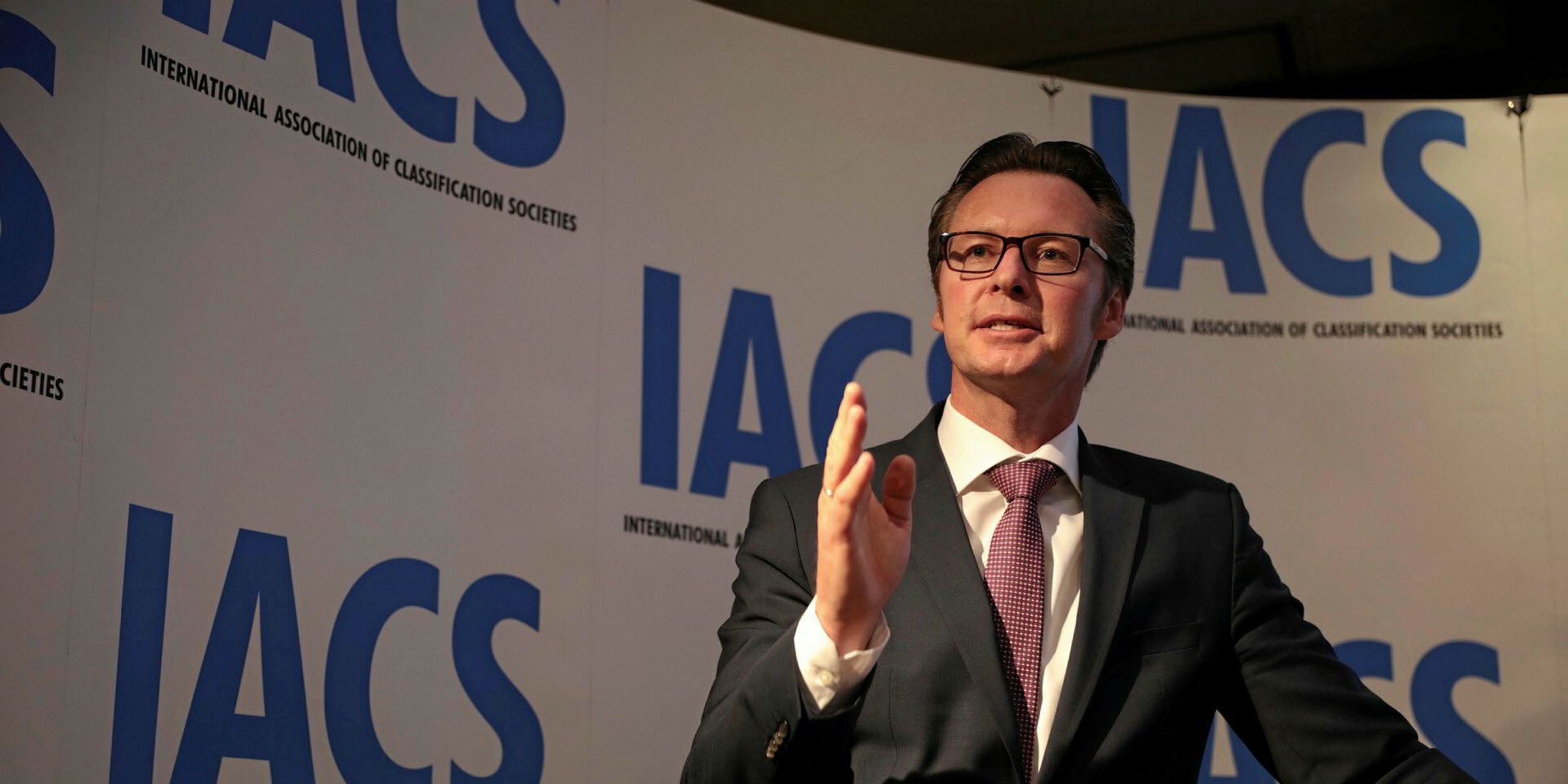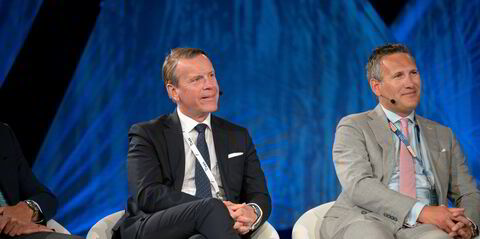The chairmanship of the International Association of Classification Societies (IACS) runs for just 12 months and it is often not enough time for ideas to be developed and carried through.
The current incumbent, DNV GL head of maritime Knut Orbeck-Nilssen, has recognised the problem and come with a solution.
Orbeck-Nilssen has introduced a five-year strategic plan so that while chairmen come and go, IACS can bring a longer-term approach to its future planning.
That is particularly important at a time when classification societies are seeking to enhance and develop the safety and environmental advances promised by digitalisation.
He describes it as a “tectonic” revolution happening in shipping through digitalisation. It is a change that he believes requires a structured long-term approach from classification societies.
But the pace of change also means the IACS needs the flexibility to take on problems as they arise.
“I would like to see a more agile IACS that can address industry topics and continue to increase transparency and build trust. It is important for IACS members to aspire to become a beacon of light,” he said. "The digital transformation will dominate.”
“What will the future of shipping look like? There will be a tremendous increase in connectivity on the high seas and a vessel’s opportunities to connect with the shore. There will be an improvement in the transparency and the environmental and safety performance of vessels.”
Under the IACS plan, a priority has been placed on developing class rules so that they allow the innovation required to meet the demands of the digital age.
“It is important that core rules, regulations and requirements allow for innovation. Specific rules and requirements that do not allow the use of new technology should be modified to help the industry become more efficient and transparent,” he said.
Orbeck-Nilssen said the rules will need to be structured to encourage automation and allow the industry to take advantage of increased connectivity.
“The unmanned solution is the future of the high seas,” he said.
He added that the Yara Birkeland, a 120-teu emission-free vessel that is to trade between three ports in Norway unmanned by 2020 gives some insight into how the future will look. The ship will be operated from a land-based control centre.
“It can take 40,000 trucks off the road,” he predicted.
But the move toward automation and connectivity has also made cyber security a central issue for the IACS. It is developing 12 recommended practices to enhance cyber security that it will propose to the IMO for adoption at the end of the year.
“The cyber resilience of the vessel becomes important as connectivity increases,” he said.
Electronic certificates have also been a significant development for IACS members and it is set to be the mainstream certification process of the future.
Orbeck-Nilssen described 2017 as a “breakthrough” year for electronic certificates with one class society issuing as many as 70,000 so far.
Additive manufacturing is also a growth area for shipping that class has to adapt to, Orbeck-Nilssen said.
Machine learning will give class the opportunity to come to quicker technical and safety solutions in the future.
Technology is also making the life of the ship surveyor safer and more efficient. Drones are taking away many of the dangerous and difficult inspection jobs surveyors had to perform.
The emergence of the concept of a so-called digital twin will allow class to replicate the ship operation in real time at an onshore centre and pave the way for improved maintenance procedures.
“It will be a electronic replica of a ship's subsystems and a virtual testing ground to enhance safety and environmental performance,” he said.



